Radio Shack/Realistic DX-390/Sangean ATS-818
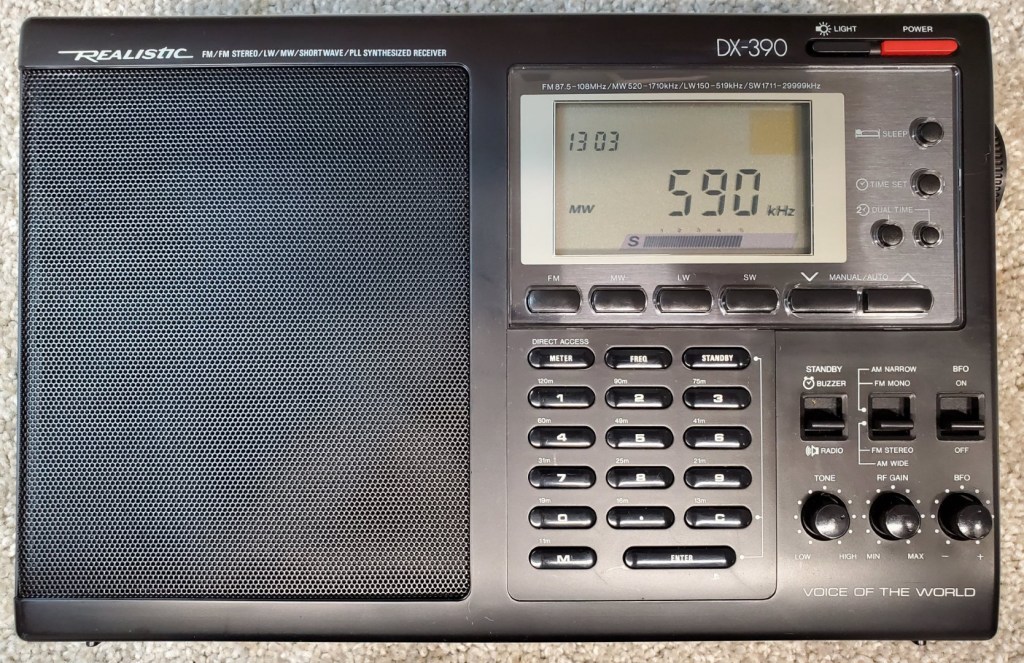
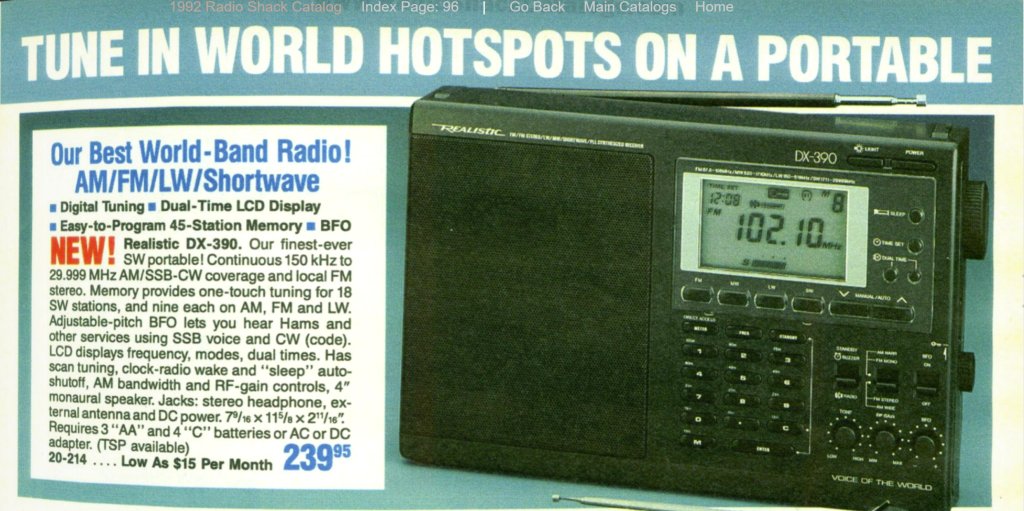
The Radio Shack/Realistic DX-390 is a rebadged Sangean ATS-818 and was available between 1992-1993. The 1992 Radio Shack catalog lists the radio at $239.95 with the Realistic name and the legend “Voice Of The World” at the lower right. (The Sangean Says “A World Of Listening”). The 1993 catalog showed a “New Low Price” of $219.95 and the picture of the radio is the same. This is the successor to the well-received DX-440/ATS-803A.My sample carries the Realistic name as shown in the catalogs but I have also seen the Radio Shack name on this model which is curious. Interestingly the Sangean version seems to have been available at a sometimes lower price but various sources quote it as having been between $175 – $220 so I’m not sure of the exact amount. They were also sold in other countries under other names such as Roberts R827 and Siemens RK 665. Radio Shack also marketed a version with a built-in cassette deck as the DX-392 as did Sangean as the ATS-818 CS albeit with a smaller speaker to make room for the cassette mechanism. A later version, the ATS-818ACS was available in a Titanium color.
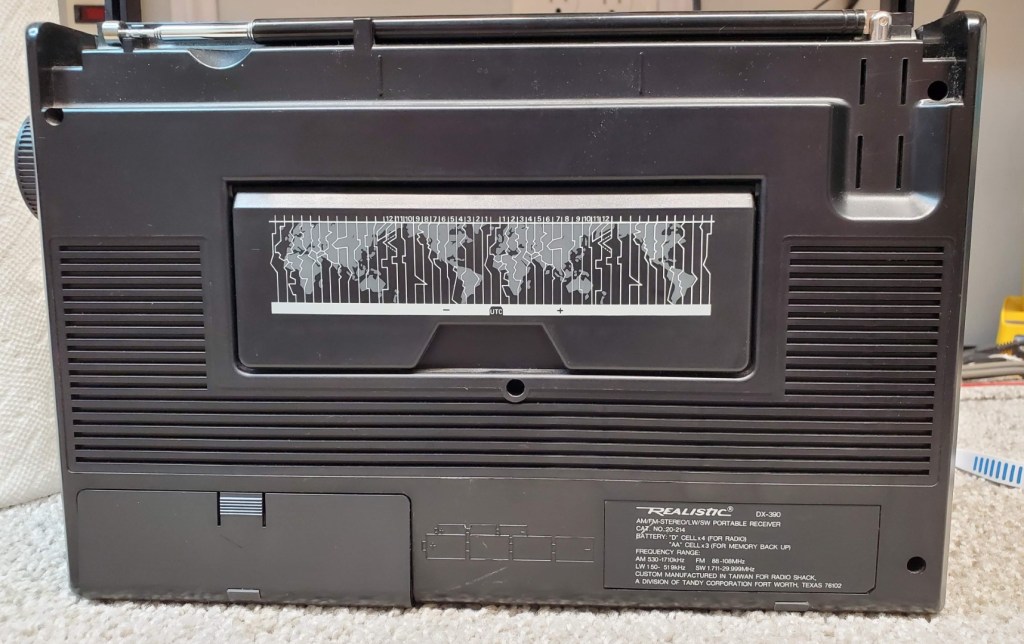
The DX-390 was one of the first serious multiband portables I owned back in the day. It had always worked well but at some point, I sold it off to help finance a new purchase and now, years later I decided to try one out again to see how it compares with the many receivers I’ve owned since. I found what looked like a nice sample at a reasonable price on eBay and soon had the radio in my hands. Cosmetically I would rate it as very good with little signs of use except for the top panel which appeared to have been somehow damaged with a streaked look that wouldn’t clean off…probably caused by some sort of cleaner that damaged the finish. However, a quick application of Novus Plastic Polish remedied that perfectly.

Above: Before & After Using Novus Plastic Polish #2 and #1
Description & Features: The DX-390/ATS-818 is a large, hefty portable measuring approximately 11.3 x 7 x 2.5 inches /296 x 192 x 68mm.
Weight: 3.64 lbs without batteries
Dual Conversion
Band Coverage: SW 1.6 – 30 MHz Continuous With 7 Meter Bands
LW 150-519 kHz
AM 520-1710 kHz (9 KHz/10 KHz Switch in Battery Compartment)
FM 87.5-108 MHz (Stereo at Headphone Output)
Tuning Via Knob/Up-Down Buttons/ Auto Scan/Direct Frequency Entry/Memory
Fast/Slow Tuning Switch with Lock Position
Tuning Steps Via Knob – Fast/Slow:
AM: 9/10 KHz/ 1 KHz
SW: 5 KHz/1 KHz
LW: 9 KHz/1 KHz
FM: .1 MHz/.05 MHz
External Antenna Jack: 1/8” Mini jack for SW/AM – Disconnects Internal Antennas
45 Memories (9 each for AM/LW/FM plus 18 SW)
Tone Control Knob
SSB With BFO Switch and Variable Control Knob
Variable RF Gain Control*
Wide Narrow AM/SW Bandwidth/FM Mono Stereo Switch
Dual Time Zone 24 Hour Clock with Alarm/Sleep Modes
Signal/Battery LCD Meter
Power: 4 D Cells, 3 AA Cells or DC Input Jack (6 Volt, 400 ma, Center Pin Negative)
*Interesting Quirk: When using the radio on its built-in antennas the RF Gain control works only on SW, but when using the External Antenna jack it works on both SW and AM. It also disconnects both internal antennas which is a plus.

Being a fairly early digital design, the DX-390 possesses some characteristics of its era. For one thing it requires 7 batteries – 3 AA’s for the clock and memories plus 4 D’s for the radio itself…a common arrangement in digital’s early days. Interestingly though, you can operate it with just the 4 D cells or using the External DC jack (6 volts 400 ma center pin negative) without the AA memory batteries, although without those AA’s in place you will lose your clock and memories if you take longer than 2 minutes to change the batteries of if you remove the DC input, so it’s probably best to use the backup batteries. The radio also mutes while tuning and has a fairly loud beep when its controls are operated. The LED illumination is incandescent and not very bright. As we’ll discuss later these issues can be remedied and most of the mods are very easy.
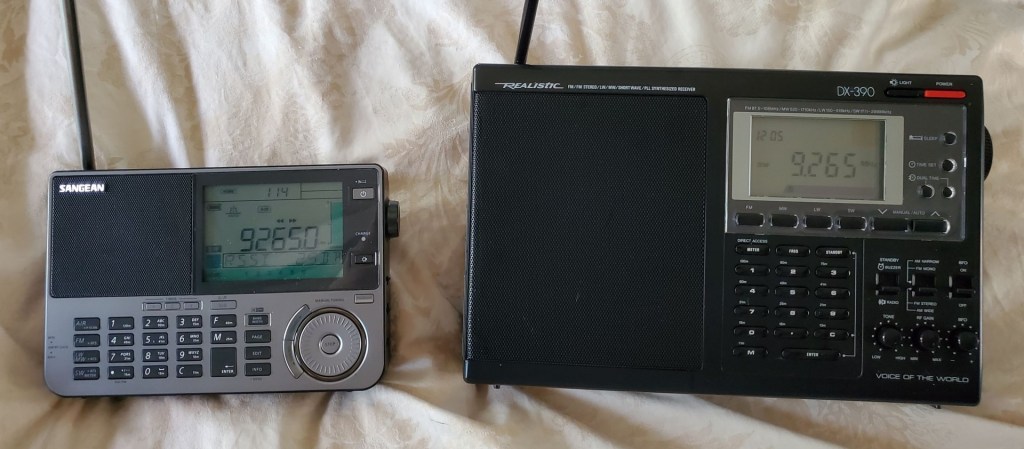
Checking It Out: As with any radio purchase I always sit with the radio and manual together to check the various functions. The DX-390 is very straight-forward and soon I was scanning around and having a great time. However, I soon discovered an undisclosed defect (typical of used radio purchases) …the tuning encoder (using the Tuning knob) did not like to tune up. It tuned down perfectly but when trying to tune up it would increase one or two increments then start tuning downward. Tuning was normal with the Up/Down buttons so it was apparent the rotary tuning encoder was at fault. Whether they are optical or electrical the common fault is almost always lubricant or dirt migration causing intermittent contact resulting in erratic operation.

The DX-390’s encoder is electrical…essentially a variable potentiometer but with a continuous contact and no stop. Luckily this was the easiest tuning encoder fix I’ve ever experienced. After removing 5 screws and the back panel I removed another 4 screws to lift out the Main PCB. Now I found the tuning encoder out in plain view which was easily removed by pulling out its connector plug and one nut. With the encoder completely removed from the radio I flushed it with 91% isopropyl alcohol while turning it briskly back and forth many times. I flushed it several times and ended with compressed air to remove any excess liquid. Not only did this completely fix the tuning issue, it also resulted in a tuning knob which now turns so freely that I can easily spin it with my fingertip even though the knob has no dimple. This makes the DX-390 a joy to tune with since I subsequently disabled the tuning muting…we’ll discuss that in the mods section below. There is now no muting and virtually no noise while tuning which makes me wonder why they added the muting in the first place. (Many early digital portables incorporated muting while tuning to eliminate nasty noise pulses but this radio seems to have none of that…it tunes smoothly and with a simple Fast/Slow switch on the side is a pleasure to bandscan with).
Performance: I am overall very pleased with the DX-390/ATS-818. It has dual bandwidths on AM and SW and if I have any complaints about the radio at all it is that the wide bandwidth is a bit narrower than I prefer. As a program listener more than a hard core DXer I prefer a little more crispness in the AM/SW audio. Interestingly the Radio Shack Service Manual quotes the AM/SW Wide Bandwidth as nominally 7 KHz with limits of 4 – 9 KHz while the Sangean Service Manual specifies 6 KHz with a limit of 4.8. Nevertheless, I would judge its wide filter to be approximately 4 KHz rather than the more common 5-7 KHz…possibly their specification is total bandwidth rather than the more commonly stated +/- so the number is actually double the resultant audio bandwidth…I’m just guessing but that’s how it sounds.
Its SW reception is quite sensitive. I compared it side by side with several top current and vintage SW portables and it ran with the best. It was especially interesting to pit it against Sangean’s current ATS-909X2 to see how a Sangean from the late 90’s might compare. Interestingly, raw SW reception was virtually identical. I tuned to several weak daytime signals fading in and out and as they faded on one radio, they faded simultaneously on the other…neither held onto the signal longer than the other. Of course, there were differences, but they were more in terms of features and sound. The Sony ICF-2010 also received similarly but its crisper audio aided intelligibility on really weak signals, and of course its synchronous detection put it a step above in some situations. Conversely, I must say that the mellower audio of the DX-390 tended to make noisy signals more listenable.
On AM the DX-390 is also a solid performer. I compared it with the earlier Realistic DX-440 (aka Sangean ATS-803A) and although the sound quality difference was very obvious (the DX-440 has much brighter audio while the DX-390 is mellower) the actual reception was fairly close with just a slight superiority for the newer DX-390 which had a slightly lower noise floor on weak daytime AM signals. It will rate *** on the AM Mega Shootout.
FM was typical for a 1990’s portable radio…very good sensitivity but only average selectivity. Today’s portable radios will separate crowded FM signals far better. But for your typical reception the DX-390 will do fine although its sound is rather ordinary…no boombox pretensions here.
Comparison With Previous Model: Although their availability overlapped for a year at Radio Shack with both models available in 1992, the DX-390/ATS-818 was the successor to the DX-440/ATS-803A. Comparing the two radios side by side I would say that the DX-390 is a subtle upgrade in a few ways. The first is a very slight improvement in the AM noise floor, such that weaker AM stations are received with a bit less background hiss, and the addition of the Expanded AM band along with the ability to use an External AM antenna while disconnecting the internal ferrite rod. Another improvement is the Fast/Slow Tuning Switch on the side of the radio which I find easier to use than the variable speed tuning on the older model. (You can see my description of this in the DX-440/ATS-803A Review). The Direct Access Memories on the newer model require only that you hit a single button to recall a station and can save 45 stations instead of 9. The newer model offers Dual Clocks for setting local and UTC time.
There is one thing I prefer on the older model though and that is the AM/SW sound quality. The newer model has an apparently narrower wide bandwidth filter which somewhat reduces clarity or crispness in the audio on AM and SW.
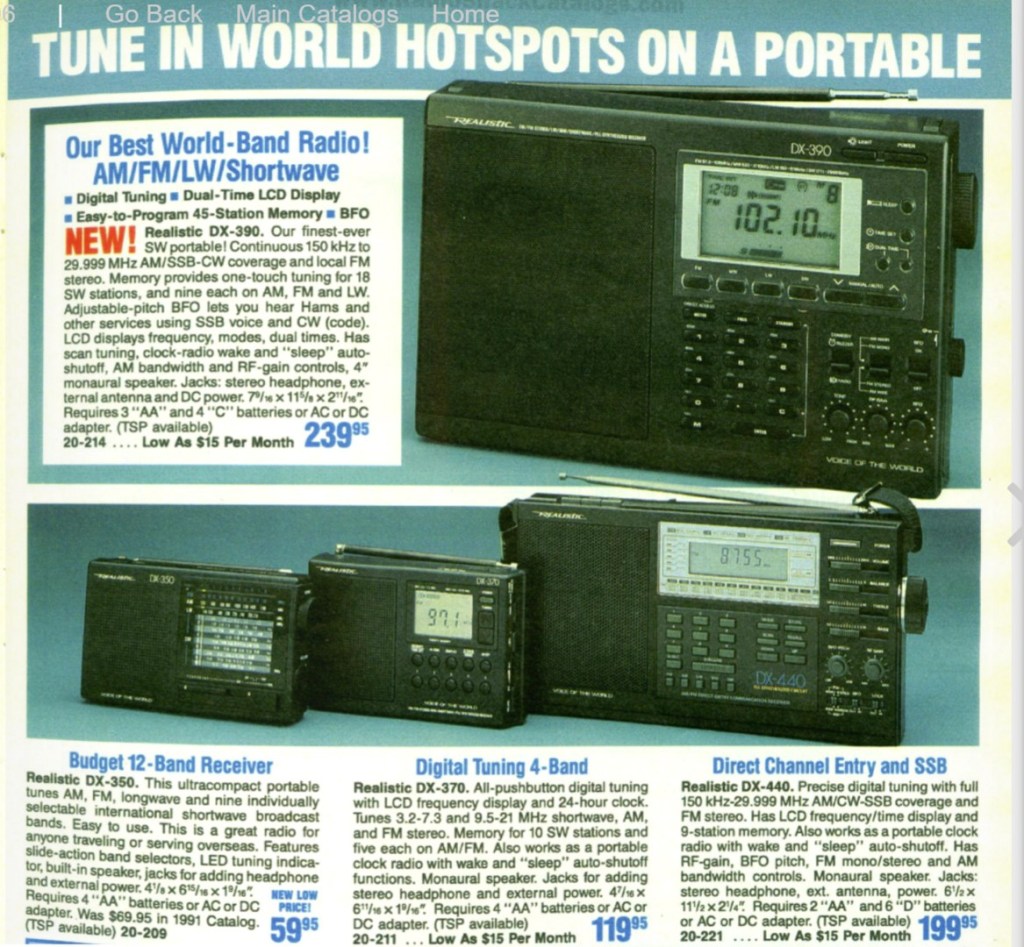
Modifications: I’ve said it before…modifying radios is not something I usually get very involved with, generally preferring to use radios as they were designed…that’s just my personal preference. The DX-390 is an exception – this radio almost begs to be modified, both because the modifications make big usability improvements but also because, for the most part, they are unusually easy and easily reversable.
Disable Muting During Tuning: I already described flushing the tuning encoder with alcohol because it was behaving erratically but it also loosened it up enough that it is now easy to spin the Tuning knob with a fingertip which was not easy before. But more importantly I did a simple mod to remove the tuning muting which involves breaking one connection. Here’s how.
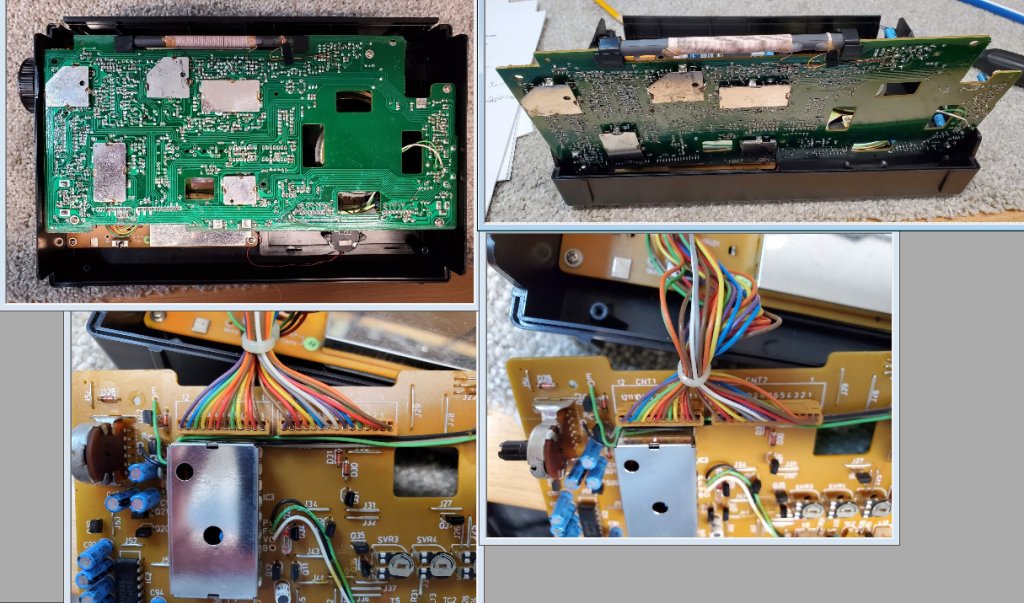
Remove 5 screws and remove the back half of the cabinet.
Remove 4 screws and swing out the main PCB.
Locate the CNT 1 Plug-in Connector
The green wire connected to pin #10 is the one to disable. You can either snip the wire and insulate the two ends or you can remove the connector plug and use a small tool to slide that connector out of the plug. Re-install the plug and that’s it!

MW/LW Sensitivity Mod: This involves removing one surface mount resistor. Here’s how:
Remove 5 screws and remove the back half of the cabinet
Lay the radio face down with the ferrite rod antenna to the top.
Locate the tiny surface mount resistor that has 102 (1K ohms) written on it in the extreme uppermost right-hand corner of the pc board. It is just to the upper left of the pc board mounting screw and the only one in the area with 102 written on it.
Remove the resistor. That’s it.
I found a subtle improvement although the original post said it was dramatic. But it was worthwhile.
(Here’s more info from that old post. “On the schematic this is the resistor that’s located across the center-tapped secondary of L19, the loopstick antenna’s output impedance transformer. Exactly why it’s there is unknown to me unless it was intended to reduce overload susceptibility. In any case the sensitivity on LW/MW will be dramatically enhanced with the removal of this resistor).
There are other mods for this radio online but I haven’t yet done any others. If you google DX-390 mods and ATS-818 mods you will find many you may want to try.
Conclusion: The Realistic DX-390/Sangean ATS-818 is an oldie but a goodie. As with most portable radios of its period FM sensitivity is fine but FM selectivity is not its forte, but its AM and SW reception are excellent. Ergonomically the radio is a joy to use and easy to learn. While this type of radio does not have 1000 memories as has become the norm, the 45 memories it does have are easy to set up and recall with a single button press without wading through menus and I like the simplicity of it. Construction quality is typically Sangean which is to say first rate, and with a few easy modifications you can improve performance even more. If you appreciate old school sturdiness and simplicity, I think you will like the DX-390/ATS-818.
You must be logged in to post a comment.